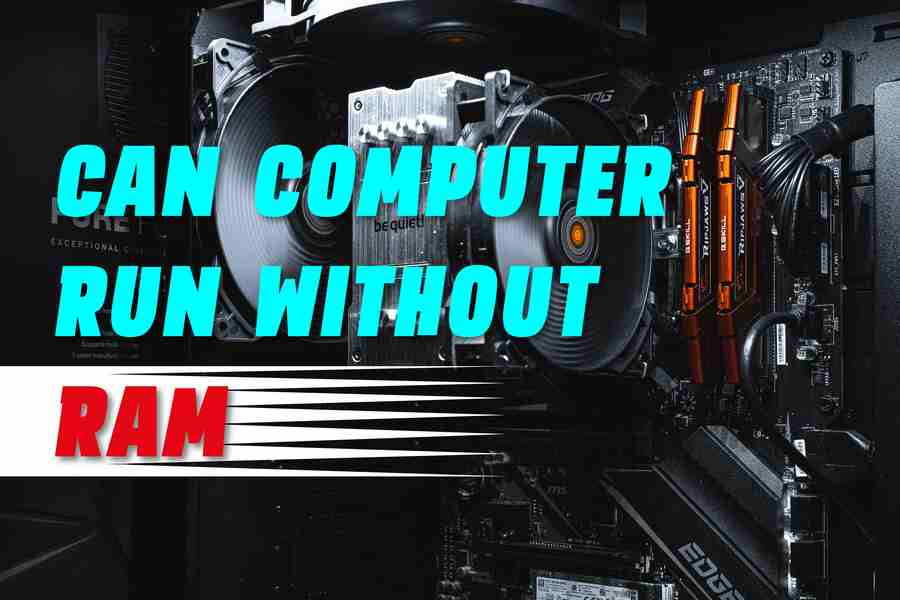A computer without RAM is like a car without gas – it might be able to move, but it’s not going very far. Just as a car needs gas, a computer needs RAM to function. RAM is what allows your computer to access data and applications quickly and efficiently. So, can a computer run without ram?
Can a Computer Run Without RAM?
No, it cannot. RAM is an essential component of a computer, and without it, the computer won’t be able to function. The operating system (OS) and all other applications that run on the computer need to access RAM to store their data or instructions. Without RAM, nothing can be stored or accessed by the processor.
What Is RAM?
Random Access Memory (RAM) is a type of computer memory that stores data and instructions temporarily. It is used to quickly access information that the processor needs to carry out its operations. When the processor needs some piece of data or instruction, it looks for it in RAM instead of going back to the hard drive or other storage media to search for it.
How To Determine How Much RAM Your Computer Needs?
- Check the minimum system requirements of your operating system.
- Consider the type of tasks you want to run on the computer.
- Check the amount of RAM installed in the computer, if any (often listed as “Memory” in the System Information window).
- Determine whether you can upgrade your existing RAM or need to buy a new one.
- Check the maximum amount of RAM supported by your computer’s motherboard.
- Consider the type and speed of RAM compatible with your computer (DDR3, DDR4, etc.).
- Consider the number of RAM slots available in your system.
- Consult an online guide or manual to ensure compatibility between the RAM and the motherboard.
- Consider the price of the RAM you need to purchase or upgrade.
- Check whether you can use your existing RAM in another computer if needed.
What Happens When A Computer Doesn’t Have Enough RAM?
- Poor system performance – When the processor cannot find enough RAM to store or access data, it has to go back and forth between the hard drive and other storage devices. This causes a significant decrease in performance as there is more delay in accessing information.
- System crashes – If there isn’t enough RAM available, the computer may crash or freeze as it cannot process the instructions or data required.
- Reduced multitasking – The processor needs enough RAM to be able to switch between multiple tasks simultaneously. If there isn’t enough RAM, the processor will struggle to keep track of all the different processes and may become sluggish when switching back and forth between them.
- Increased power consumption – When the processor cannot access data and instructions quickly, it has to work harder to get them, resulting in more power consumption.
- Reduced application support – Many applications require a certain amount of RAM to run correctly. If there isn’t enough, the application may crash or not run at all.
How To Add More RAM To Your Computer If Needed?
- Turn the computer off and unplug it.
- Open the cabinet of your computer to get access to the RAM slots.
- Carefully remove the existing RAM from its slot.
- Insert the new RAM in an empty slot or replace the existing one with a higher-capacity module, if necessary.
- Close the cabinet and plug in the computer.
- Turn on your computer to check if it is working properly with the new RAM.
The Bottom Line
RAM is a crucial component of any computer and is essential for it to run properly. It helps the processor quickly access information that it needs to carry out its operations. If your computer does not have enough RAM, you can add more RAM if needed by following the steps outlined above. Just remember to turn off and unplug the computer before opening the cabinet and be careful not to damage any of the components. Once you have added more RAM, turn your computer on and check if it is functioning properly.
